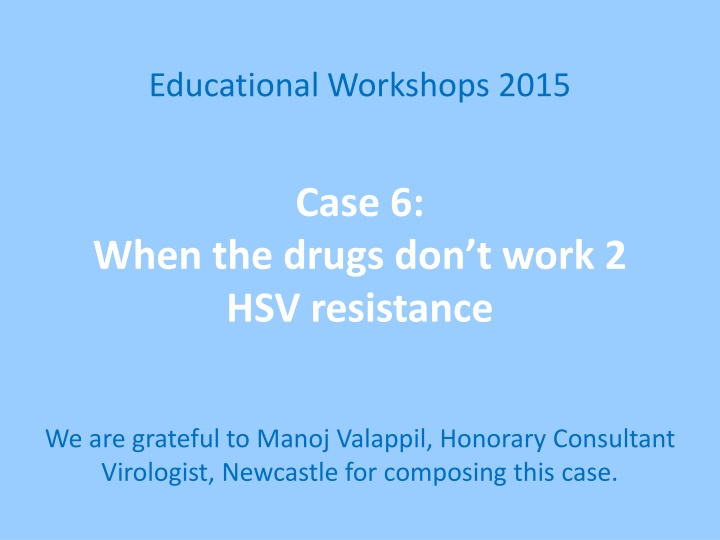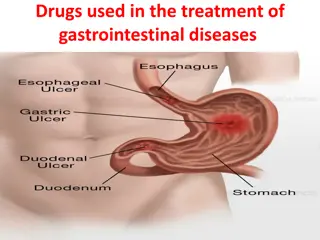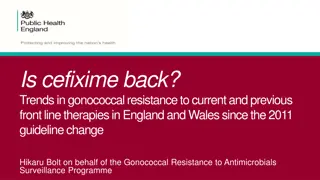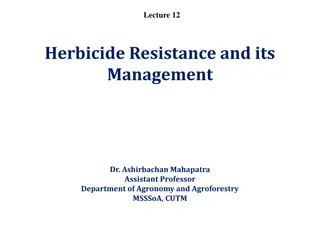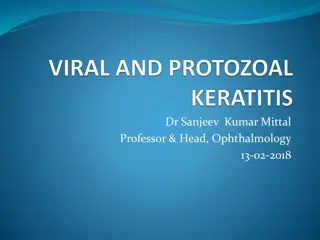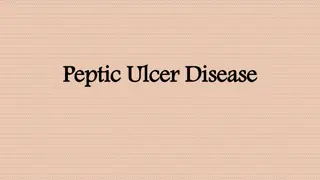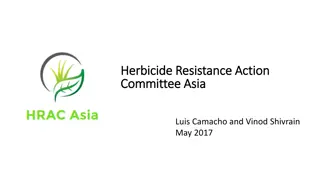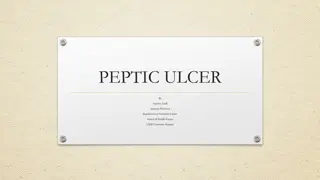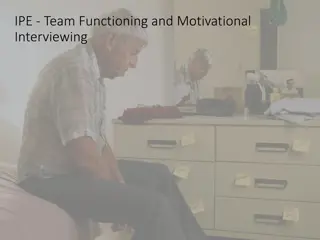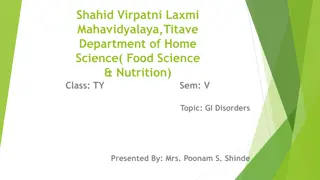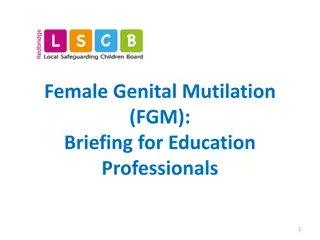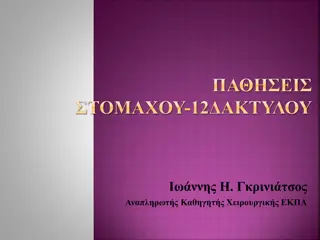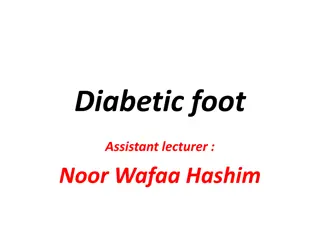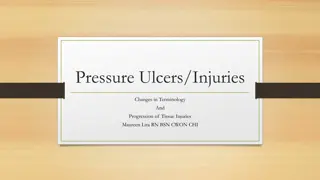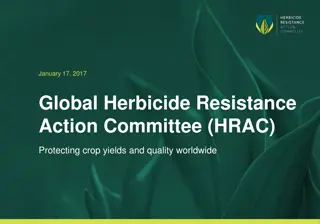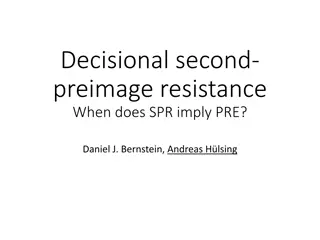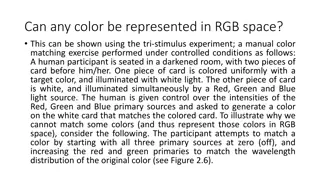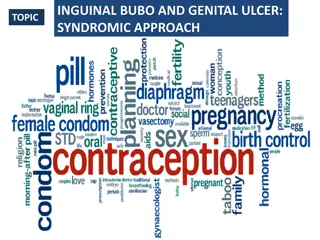Managing HSV Resistance in Genital Ulcers Post BMT
A case study of a 60-year-old woman diagnosed with ALL and presenting with a genital ulcer post BMT. Swab testing reveals HSV-2 DNA with questions on aciclovir resistance and management options. Learn about differential diagnosis, treatment protocols, and adjusting aciclovir doses in renal impairment.
Download Presentation

Please find below an Image/Link to download the presentation.
The content on the website is provided AS IS for your information and personal use only. It may not be sold, licensed, or shared on other websites without obtaining consent from the author.If you encounter any issues during the download, it is possible that the publisher has removed the file from their server.
You are allowed to download the files provided on this website for personal or commercial use, subject to the condition that they are used lawfully. All files are the property of their respective owners.
The content on the website is provided AS IS for your information and personal use only. It may not be sold, licensed, or shared on other websites without obtaining consent from the author.
E N D
Presentation Transcript
Educational Workshops 2015 Case 6: When the drugs don t work 2 HSV resistance We are grateful to Manoj Valappil, Honorary Consultant Virologist, Newcastle for composing this case.
May 2013 60yr old woman Diagnosed with ALL Chemotherapy - remission Risk factors for relapse++ Allogeneic BMT Unrelated donor
June 2013 d+16 post BMT Genital ulcer Q1) What is the Differential diagnosis?
Differential diagnosis of genital ulcer Infectious HSV T Pallidum H Ducreyi Chlamydia trachomatis serovars L1-3 (lymphogranuloma venereum; LGV) Klebsiella granulomatis (Granuloma inguinale / Donovanosis ) Non-infectious - GvHD, fixed drug reactions, Beh et s syndrome, neoplasms, and trauma
Swab: HSV 2 DNA detected Was on Aciclovir prophylaxis Q2) Is this Aciclovir resistance? What is the next step in management?
Options: a) Aciclovir resistance unlikely; increase to treatment dose b) Aciclovir resistance likely; switch to another drug
Aciclovir resistance unlikely; switched to iv Aciclovir (treatment dose) BNF doses given in subsequent slides but higher doses can be given in certain circumstances (if benefit outweighs risk) up to 15mg/kg IV The dose needs to be adjusted in renal impairment
BNF dosing Genital herpes simplex, treatment of first episode, 200 mg 5 times daily or 400 mg 3 times daily usually for 5 days, longer if new lesions appear during treatment or if healing is incomplete 400 mg 5 times daily for 7 10 days in immunocompromised or HIV-positive patients Treatment of recurrent infection, 800 mg 3 times daily for 2 days or 200 mg 5 times daily for 5 days or 400 mg 3 times daily for 3 5 days 400 mg 3 times daily for 5 10 days in immunocompromised or HIV-positive patients
BNF dosing Herpes simplex, suppression, 400 mg twice daily or 200 mg 4 times daily; increased to 400 mg 3 times daily if recurrences occur on standard dose Herpes simplex, prophylaxis in the immunocompromised - 200 400 mg 4 times daily IV dose - 5 mg/kg every 8 hours usually for 5 days, doubled to 10 mg/kg every 8 hours if resistant organisms suspected Prophylaxis of herpes simplex in the immunocompromised - 5 mg/kg every 8 hours
Q3) When do you suspect HSV antiviral drug resistance?
Consider resistance/treatment failure if: Multiple reactivations/breakthrough Persistence of lesions >1 week after starting treatment without appreciable response New satellite lesions few days after adequate therapy
Progress Switched to IV Aciclovir 10mg/kg Ordinarily 5-10 days of treatment In severely immunocompromised patients, therapy may be extended depending on the clinical response. Lesions better, discharged home on prophylactic Aciclovir 19/6/13: d+34, acute skin GvHD Treated with Prednisolone 2mg/kg EBV reactivation <2x10^3 c/ml
July 2013 Perianal ulcer (worse) HSV2 detected from a swab of the lesion Possible Aciclovir resistance Q4) What is the mechanism of action of Aciclovir? What is the mechanism of HSV resistance to Aciclovir?
Aciclovir is a Guanosine analogue. After three phosphorylation steps, it is converted into tri- phosphate. Aciclovir is converted to aciclovir monophosphate by the HSV Thymidine kinase. This is then converted into di and tri phosphates by (human) cellular enzymes. Aciclovir tri-phosphate is incorporated into the viral DNA by DNA polymerase. It inhibits replication by acting as a DNA chain terminator. Aciclovir resistance results from mutations in the HSV genome coding for Thymidine kinase or DNA polymerase.
Aciclovir resistant HSV Due to mutations in genes coding for 1) Thymidine kinase/TK (common) Variants include: TK negative TK reduced TK altered or 2) DNA Polymerase (rare)
Q5) What is the prevalence of HSV resistance to Aciclovir?
Prevalence of Aciclovir resistant HSV Immunocompetent 0.1-0.7% Immunocompromised 3.5% - 10% HIV: 3.5-7 SOT: 2.5-10 HSCT: 4.1-10.9
Resistance test was carried out, result: Genotypic resistance: deletion of G with a stop codon at position 98 Phenotype: Antiviral IC50( M) Aciclovir >40 Penciclovir >160 Foscarnet 98.5 S/I/R Resistant Resistant Sensitive Cidofovir: testing not available resistance rare
Treatment Started on IV Cidofovir (out patient) Creatinine 74. Good response to treatment lesions fully healed Switched to prophylactic Valaciclovir 1gm bd Valaciclovir is a pro-drug of aciclovir with better absorption (gives higher plasma levels) but more expensive than Aciclovir
Progress EBV reactivation (indicates immunosuppression) EBV viral load increase >10^6 copies/ml No clinical evidence of PTLD - treated with Rituximab
August 2013 D100 Chimerism 94% (expect 100% around 3 months) High risk for ALL relapse ?reduce immunosuppression High risk for GvHD - ?continue immunosuppression Balancing act! Cyclosporine tapered and stopped
November 2013 Rash & Diarrhoea Q6) What is the differential diagnosis?
Differential diagnosis Infection Inflammatory GvHD
Investigations: Stool: Culture negative GI virus multiplex PCR panel: negative Norovirus, Rotavirus, Adenovirus, Sapovirus, Astrovirus Biopsy: Skin and gut GvHD IV Methyl prednisolone, Cyclosporin Improved
Progress Recurrence of Genital ulcer HSV 2 detected Q7) Will this strain be resistant to aciclovir?
Not necessarily In a new episode of reactivation, virus is likely to be the wild type virus that had originally (at the time of primary infection) established latency in the dorsal root ganglion.
Progress Resistance testing: unable to culture (low ct value 35.8) Treated with IV Cidofovir (plus Cidofovir gel), Improved put back on Valaciclovir prophylaxis April 2014: Chimerism 100% Problems with chronic skin GvHD, referred for Extracorporeal photopheresis (ECP)
May - August 2014 EBV reactivation - PTLD lesions in the liver and gut. No response to Rituximab (resistant) Started on chemotherapy for PTLD: CHOP-R Developed disseminated HSV - Crops of vesicular lesions on the back, sacrum and vulva spreading to back - break through on Val Acv 1gm bd. Treated with Foscarnet and discharged on Valacyclovir prophylaxis (1gm tds)
October 2014 New lesions Resistance test: similar result as the first one Treated with Foscarnet (7 days) and switched to out patient Cidofovir (4 doses over 5 weeks) Ulcers improved Repeat swab: HSV not detected
January 2015 Deterioration of renal function Cr 162, Cr clearance 29 Cidofovir and Foscarnet are nephrotoxic (also had contrast for CT and gentamicin) High dose aciclovir and Valaciclovir can crystallise in renal tubules patients must be well hydrated Valaciclovir dose decreased to 500mg bd April 2015: New lesions: HSV detected Poor renal function treated with Cidofovir gel (prepared by pharmacy) Not fully improving
May July 2015 Neutropenic sepsis, Cr 183 Persisting vulval lesions, swab: HSV not detected ?other causes Biopsy: genital GvHD confirmed Treated with steroid cream June 2015: Cr335 (not considered for dialysis) July 2015: Pneumonia, pseudomonas line infection, E. Coli sepsis , Cr 393 19/7/15: RIP
Summary HSV-2 reactivation post HSCT Despite adequate treatment and prophylaxis, multiple reactivations occurred due to severe immunosuppression for GvHD and PTLD Aciclovir resistant HSV was treated with second line antiviral agents which were nephrotoxic Patient eventually developed renal failure Simultaneous HSV reactivation along with genital GvHD led to a delay in diagnosing genital GvHD in the latter stages
Lessons HSV reactivation is still a problem in immunocompromised patients. Early diagnosis and treatment with high dose acyclovir is critical. Multiple HSV reactivations can lead to acyclovir resistance. Persistent/refractory/disseminated acyclovir resistant HSV in immunocompromised patients managed with second line agents are associated with significant morbidity (mortality) HSV and skin GvHD may co-exist consider biopsy if lesions are unresponsive to appropriate therapy
